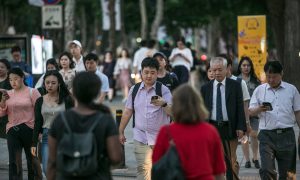In recent years, Korea has been known for itsDeveloped economy, modern living environment, excellent social benefits and convenient location in Asia, attracting a growing number ofimmigrantspeople. However, the main concern of many people before they consider moving to Korea is thecost of livingThe
This post will analyze in detailRent, Taxes, Healthcare and Education Costs in Koreaand compare it with other countries to help you fully evaluate theImmigration to KoreaThe economic viability of the
I. Rent in Korea: Seoul vs. other areas
Rent is one of the biggest expenses after immigration, especially in a cosmopolitan city like Seoul.
1. How to rent a room in Korea
There are three main models of rental housing in Korea:
- Monthly rent (월세): Fixed monthly rent, suitable for ordinary office workers and international students.
- Full rental (전세): One-time payment60%-80% Room RatesThe deposit is not required for the duration of the stay, and the deposit is refundable at the end of the stay, making it suitable for families with sufficient funds.
- Semi-full rental (반전세): Between full and monthly rentals, a deposit is paid and the monthly rent is relatively low.
2. Comparison of rents by region
in order to60 square meters (approx. 2 bedrooms) apartmentAs an example, the monthly prices for different regions are as follows:
| as suffix city name, means prefecture or county (area administered by a prefecture level city or county level city) | Monthly rent (won) | Monthly Rent (RMB) |
|---|---|---|
| Seoul 서울, capital of South Korea (Chinese spelling adopted in 2005) | 800,000 - 1.5 million | 4200 – 8000 |
| Busan | 500,000 - 1,000,000 | 2600 – 5300 |
| Daegu, capital of Eastern Province of China (Tw) | 400,000 - 900,000 | 2100 – 4800 |
| Jeju Island special autonomous province, South Korea, a World Heritage site | 450,000 - 850,000 | 2400 – 4500 |
💡 Conclusion:
- Seoul has the most expensive rents, especially in busy areas such as Gangnam and Hongdae.
- Cities such as Busan and Daegu have relatively cheap rents for immigrants with limited budgets.
Taxes in Korea: Salary Tax, Consumption Tax and House Purchase Tax
South Korea has a relatively comprehensive tax system that includesIncome tax, excise tax, property taxetc., you need to understand the basic tax expenses after immigration.
1. Income tax (payroll tax)
| Annual income (won) | Income tax rate |
|---|---|
| Under 12 million | 6% |
| 12 million - 46 million | 15% |
| 46 million - 88 million | 24% |
| 88 million - 150 million | 35% |
| 150 million - 300 million | 38% |
| More than 300 million | 42% |
💡 Conclusion:
- Korea's relatively high tax rate.Significant increase in tax rate after annual salary exceeds 46 million won (about 240,000 yuan)The
- Corporate executives, IT, finance and other high-paying industries need to consider tax costs.
2. Other taxes
- Consumption tax (VAT): 10% (All goods and services in Korea are tax inclusive by default).
- Real Estate Transaction Tax: Purchase of property is subject toPurchase tax for 1% - 4%Holding property is subject to0.1%-1% Property TaxesThe
- Car tax: The purchase of a car is subject to payment of7% Consumption tax, the annual inspection costs are higher.
III. Health care costs in Korea: universal health insurance vs. private insurance
1. Korea's universal health insurance system (National Health Insurance, NHIS)
✅ All foreigners who have resided in Korea for more than 6 monthsEnrollment in the National Health Insurance (NHIS) is mandatory.
✅ insurance costPayments are made monthly and are generally6.99% of revenue(501 TP3T each for the employer and the individual).
✅ Cost of medical treatment:
- General Outpatient Clinic:KRW 10,000-30,000 (about RMB 50-150)The
- Hospitalization:Government subsidizes approximately 50%-80% costsThe actual burden is lower.
- Dental, eye, and cosmetic surgery are not covered by health insurance and cost more.
2. Private health insurance
- insurance companies provide additional supplemental health insurance.RMB 100-300 per month, a higher percentage of expenses may be reimbursed.
- Ideal for immigrants who don't want to incur high medical bills.
💡 Conclusion:
- Health insurance contributions are relatively low, but coverage is extensive and access is cheapThe
- Cosmetic surgery, dentistry, and other non-Medicare-covered items are expensive, additional commercial insurance is required.
Cost of Education in Korea: Public vs. Private
The Korean education system is divided intoPublic, international and private schoolsThe immigrant families need to choose the right educational model according to their budget.
1. Public schools (cheap but competitive)
✅ Tuition: elementary to high school basicfree (of charge)The only expenses that need to be paid are for meals and extracurricular classes (about 300,000-500,000 won/year).
✅ Korean language instruction, children of immigrants are required to pass a Korean language test or be tutored in an adaptation class.
✅ Education is highly competitive and the pressure to take the entrance exams is high.

2. International schools (for expatriate families)
✅ Tuition:15-30 million won/year (about 80,000-160,000 RMB)The
✅ Adopting the British and American education system, it is suitable for families who plan to subsequently travel to universities in Europe and the United States.
✅ Limited places are available mainly in major cities such as Seoul and Busan.
3. Private schools (high tuition fees, better quality of education)
✅ Tuition:8-15 million won/year (about 40,000-80,000 RMB)The
✅ The curriculum is of high quality, but still mainly in Korean.
💡 Conclusion:
- Public education is cheap but competitive for low-cost families.
- International schools are suitable for expatriate families but are expensive.
V. Comprehensive Cost of Living Comparison: Korea vs. China vs. Japan
| sports event | Korea from the fall of the Joseon dynasty in 1897 | sino | Japanese |
|---|---|---|---|
| Rent (monthly) | 6000 won (Seoul) | 5000 Yuan (Beijing) | 7000 (Tokyo) |
| food and drink expenses | About $1000/month | About $800/month | About 1500 yuan/month |
| public education | free (of charge) | free (of charge) | free (of charge) |
| private education | 40-160,000/year | 3-10 million/year | 50-200,000/year |
| medical insurance | 6.99% Income | 5%-10% Revenue | 10% Revenue |
💡 Conclusion:

- Rent: Seoul has high housing prices, but the all-rent model is less common in other countries and is suitable for long-term residents.
- Taxes: South Korea's tax rate is higher than China's, but slightly lower than Japan's.
- Education: Public schools in Korea are free, but private and international schools are expensive.
- Medical: Korean health insurance costs are moderate, making it relatively cheap to see a doctor.
Summary:Immigration to KoreaIs the cost of living right for you?
✅ If you want to save money on education and healthcare, Korea is a good choice.
✅ If you are a highly paid professionalKorea has high taxes but good social welfare.
✅ If you're on a budget, suggests avoiding Seoul and choosing to live in places like Busan and Daegu.
Overall, the cost of living in South Korea is in the middle of Asia, making it suitable for middle to high-income families to live for a long period of time. Before emigrating, it is advisable to plan your finances to better adapt to life in Korea!






